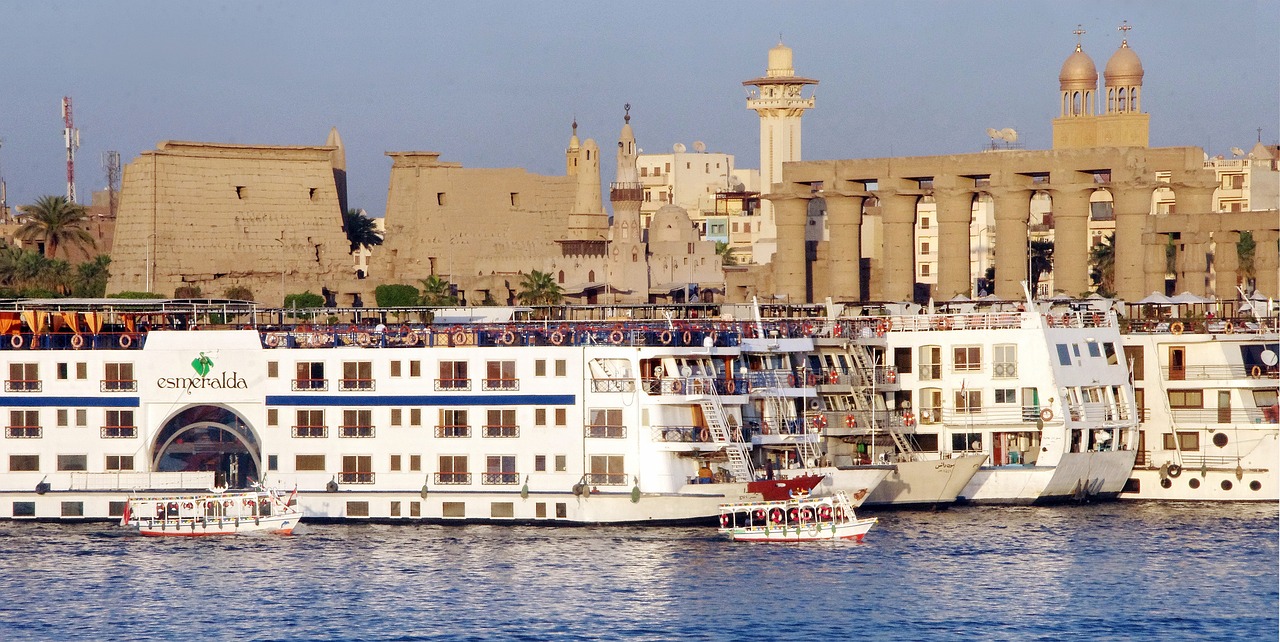When the Nile River comes to mind, it’s often accompanied by thoughts of Egypt, and rightfully so, given its immense historical and cultural importance. Ancient Greek historian Herodotus famously declared Egypt to be “the gift of the Nile,” highlighting the river’s critical role in the life and prosperity of the Egyptian civilization.
For the Ancient Egyptians, the Nile was more than just a waterway; it was a divine blessing, symbolizing life itself. The ebb and flow of the Nile’s waters were paramount in shaping daily life and determining the seasonal calendar of ancient Egypt, which was divided into three primary periods: the flooding season, the sowing season, and the harvesting season. The onset of the flood was heralded by the rising of the star Sirius, which marked the beginning of the Egyptian New Year. The flooding of the Nile brought fertility and abundance to the land, but inadequate or excessive floods posed severe risks—famine or destruction of homes. Thus, the river’s behavior was seen as a direct reflection of the gods’ will.
Two principal deities were associated with the Nile’s cycles: Khnum and Hapi. Khnum, depicted with a ram’s head, was revered as the god of the Nile waters, responsible for fostering life and fertility along its banks, where diverse flora and fauna flourished. Additionally, his connection to clay—a resource brought forth by the annual floods—led to the belief that he was also the creator of humanity. Khnum was especially venerated on Elephantine Island, with his temple located in Esna, around 60 kilometers south of Luxor. On the other hand, Hapi, usually represented as an androgynous figure, symbolized the harmony of both feminine and masculine traits, embodying both parental roles for the river. Notably, the name “Hapi” in ancient Egyptian could mean “happy,” a nod to the bountiful life he brought to the land. In various temple depictions, such as those found at Karnak and Luxor, Hapi is often illustrated performing ceremonial acts with lotus and papyrus, symbolizing the prosperous unity of Upper and Lower Egypt.
Another significant figure in Nile mythology is Osiris, whose story is intertwined with the river’s legacy. Osiris, betrayed by his envious brother Set, was dismembered and cast into the Nile. The river currents carried his remains to the Mediterranean, where his wife, Isis, used her magical abilities to locate and restore him. From their union, Horus was born, who would later avenge his father by defeating Set. Osiris’ cycle of death and resurrection closely aligned with the patterns of the Nile’s flooding, making him a vital symbol in Egyptian mythology. Artistic representations of this myth can still be found in the Temple of Horus located in Edfu.
Additionally, the wildlife associated with the Nile held symbolic significance in ancient culture. Creatures like crocodiles and hippos were feared, leading Egyptians to worship them to avert danger and misfortune. The crocodile deity Sobek, particularly venerated in Fayoum and at the temple in Kom Ombo, highlights this reverence. Various fish and birds indigenous to the Nile were also cherished, representing abundance and the continuity of life beyond death.
Today, these ancient sites continue to attract countless visitors eager to experience the rich mythology of the Nile and its historical context. A Nile cruise can offer an enchanting way to connect with these storied landscapes and the ancient narratives that they embody.



